Research Area Neurophysiology of Exercise
Research into movement variability and into the coordinative structure of movement patterns has gained momentum in recent years as the significance of these aspects of human movement for important functional characteristics, such as motor learning, balance and stability, situation adaptability, or coping with pathologies become more and more apparent.
Our research group investigates sensorimotor integration. We analyze movement variability; the coordinative structure of movement patterns (PCA; “principal movements”); how muscles are activated and how muscle activation is coordinated between muscles (EMG, muscle synergies); and we monitor brain activity (EEG) to link phenomena in the EEG with aspects of movement control.
One focus of our group is postural control research. The ability to accurately control one’s movements and posture is relevant in all stages of life. It’s one of the first things an infant learns and it determines to a large extend health, independence, and quality of life in old age. In sports, balance is highly relevant for performance and for injury prevention. It seems obvious that postural control is related to the coordination of the movements of different segments, however, how exactly does this coordinative structure manifest itself? Is better balance associated with faster, stronger, or better coordinated reaction to perturbations? What exactly changes in the movement characteristics during balance training? Do movement patterns differ between stable and unstable or between young and old subjects? How does fatigue affect balance and coordination? - Our group develops and applies methods examining covariation in segment kinematics to approach questions about balance and coordination from a new angle.
A second research focus is technique analysis in sports. The technique of an athlete is the specific coordinative whole-body movement pattern that the athletes exhibit in standard situations of their sport. On the one hand, the technique of an athlete depends on highly specific factors such as the specific body shape, motor learning history, and abilities of the individual athlete; on the other hand, there are common features in the techniques of athletes that allow an experienced coach to characterize, evaluate, and even suggest improvements to the specific techniques of athletes. Scientifically it is challenging how the techniques of different athletes can objectively be compared and how suggestions for improvements can be derived. We quantify the underlying coordinative structure of movements to quantify and compare the techniques between groups of athletes.
Keywords: Mitochondria, neurodegenerative diseases, brain aging
Keywords: Injury prevention, return to sport, ACL
Keywords: Technique analysis, motion capture, principal movements
Univ.-Prof. Dr. Peter Federolf
Keywords: Motion analysis, neuromuscular control, system dynamics, stability, technique analysis in sport
Ass. Prof. Dipl.-Ing. Dr. Dieter Heinrich
Keywords: Computational biomechanics, (neuro)musculoskeletal modelling, performance optimization
Keywords: Biomechanics, motor control, gait and running
Keywords: Muscle activation, postural control, balance training, knee injury biomechanics
Keywords: Digitalization in sport, e-sport, motor control, movement variability
Keywords: Postural control, sensorimotor feedback, movement variability, internal-external focus
Publications 2024
Contributions to Books / Journals
Journal Article (Original Paper)
- Debertin, D; Haag, L; Federolf, P (2024): IMU Data-Driven and PCA-Based Approach to Establish Quantifiable and Practically Applicable Measures for V2 Technique Elements in Cross-Country Skiing.
In: Scandinavian Journal Of Medicine & Science In Sports 34/7, Nr. e14691. (DOI) (Web link) - Debertin, D; Wargel, A; Mohr, M (2024): Reliability of Xsens IMU-Based Lower Extremity Joint Angles during In-Field Running.
In: Sensors 24/3, No. 871. (DOI) (Web link) - Dobler, F; Mayr, R; Lengnick, H; Federolf, P; Alexander, N (2024): Efficacy of hinged and carbon fiber ankle-foot orthoses in children with unilateral spastic cerebral palsy and drop-foot gait pattern.
In: PROSTHETICS AND ORTHOTICS INTERNATIONAL 48/4, pp. 380 - 386. (DOI) (Web link) - Jaén-Carrillo, D; Ruiz-Alias, SA; Olaya-Cuartero, J; García-Pinillos, F (online first): Stryd biomechanical parameters as indicators of running economy and performance.
In: Proceedings of the Institution of Mechanical Engineers, Part P: Journal of Sports Engineering and Technology. (DOI) (Web link) - Mohr, M; Federolf, P; Heinrich, D; Nitschke, M; Raschner, C; Scharbert, J; Koelewijn, AD (2024): An 8-week injury prevention exercise program combined with change-of-direction technique training limits movement patterns associated with anterior cruciate ligament injury risk.
In: Scientific Reports 14/1, No. 3115. (DOI) (Web link) - Mohr, M; Peer, L; De Michiel, A; van Andel, S; Federolf, P (online first): Whole-body kinematic adaptations to running on an unstable, irregular, and compliant surface.
In: Sports Biomechanics . (DOI) - Ñancupil-Andrade, AA; Ruiz-Alias, SA; Pérez-Castilla, A; Jaén, D; García-Pinillos, F (online first): Running Functional Threshold versus Critical Power: Same concept but different values.
In: International Journal of Sports Medicine. (DOI) (Web link) - Röhrl, F; Federolf, P; Mohr, M (online first): Ergonomic saddle design features influence lumbar spine motion and can reduce low back pain in mountain biking.
In: Sports Biomechanics . (DOI) (Web link) - Ruiz-Alias, SA; Pérez-Castilla, A; Jaén-Carrillo, D; García-Pinillos, F (early view): Order effect of an 8-week concurrent training program on the maximal fat oxidation.
In: Sport Sciences for Health. (DOI) (Web link) - Santos, L; Federolf, P; Schneider, F; Pocecco, E; Fernández-Río, J; Iglesias-Soler, E; Carballeira-Fernández, E; Uriarte, S; Dopico-Calvo, X (2024): In-contest body acceleration profiles for the judo male and female weight divisions.
In: Frontiers in Sports and Active Living 6, Nr. 1372314. (DOI) (Web link)
Journal Article (Other)
- Rausch, L; Birklbauer, A; Federolf, P; Hecksteden, A; Hofmann, P; Niebauer, J; Reich, B; Rieder, F; Ruin, S; Scharhag, J; Seebacher, B; Treff, G; Tschan, H; Wessner, B; Würth, S; Müller, E (2024): Position statement regarding the current standing of exercise therapy in Austria (Positionspapier zur Situation der Trainingstherapie in Österreich).
In: Current Issues in Sport Science 9/1, No. 001. (DOI) (Web link) - Scheiber, B; Spiegl, C; Plattner, J; Monsberger, S; Federolf, P (2024): Is screening for motor skill deficits in Tyrolean preschool children warranted and feasible? A protocol for a two-stage cross-sectional study.
In: BMJ Open 14/6, No. e081311. (DOI) (Web link)
Journal Article (Meeting-Abstract)
- Mohr, M; de Santis, F (2024): 496 BO56 – Technique modification and training gamification are efficacious in reducing the peak knee abduction moment during high-intensity change-of-direction maneuvers.
In: British Journal of Sports Medicine 58/Suppl_2, pp. A74 - A75. (DOI) (Web link)
Journal Article (Editorial)
- Jaén-Carrillo, D; Pérez-Castilla, A; García-Pinillos, F (2024): Wearable and Portable Devices in Sport Biomechanics and Training Science.
In: Sensors 24/14, Nr. 4616. (DOI) (Web link)
Journal Article (Correction: Self-Correction)
- Mohr, M; Federolf, P; Heinrich, D; Nitschke, M; Raschner, C; Scharbert, J; Koelewijn, AD (2024): Author Correction: An 8-week injury prevention exercise program combined with change-of-direction technique training limits movement patterns associated with anterior cruciate ligament injury risk.
In: Scientific Reports 14/1, Nr. 5426. (DOI) (Web link) - Santos, L; Federolf, P; Schneider, F; Pocecco, E; Fernández-Río, J; Iglesias-Soler, E; Carballeira-Fernández, E; Uriarte, S; Dopico-Calvo, X (2024): Corrigendum: In-contest body acceleration profiles for the judo male and female weight divisions.
In: Frontiers in Sports and Active Living 6, No. 1429243. (DOI) (Web link)
Proceedings Article (Full Paper)
- Debertin, D; Wargel, A; Böhmer, M; Federolf, P (2024): Differences between parallel skiing and carving based on wearable sensor data and technique analysis algorithms.
In: International Society of Biomechanics in Sports: Proceedings of the 42nd Conference of the International Society of Biomechanics in Sports (ISBS). Marquette, Michigan: NMU Commons. (Web link) - Federolf, P (2024): How does the neuromuscular system utilize sensory feedback for the control of skilled movements in sport? A perspective.
In: International Society of Biomechanics in Sports: Proceedings of the 42nd Conference of the International Society of Biomechanics in Sports (ISBS). Marquette, Michigan: NMU Commons. (Web link) - Kühne, M; Sanin, C; Mohr, M (2024): Unraveling kinematics of unplanned change-of-direction maneuvers: a field-based exploration focused on acl injury risk.
In: International Society of Biomechanics in Sports: Proceedings of the 42nd Conference of the International Society of Biomechanics in Sports (ISBS). Marquette, Michigan: NMU Commons. (Web link) - Mohr, M; Sanin, C; Kühne, M (2024): On-field assessment of change-of-direction (cod) movements: adaptation in leg and trunk posture throughout a cod sequence.
In: International Society of Biomechanics in Sports: Proceedings of the 42nd Conference of the International Society of Biomechanics in Sports (ISBS). Marquette, Michigan: NMU Commons. (Web link)
Proceedings Article (Abstract)
- Calisti, M; Mohr, M; Federolf, P (2024): Sensitivity of jump-landing movement characteristics to acl injury history and fatigue.
In: Davison, RCR.; Tsolakidis, E; Thompson, JL; Ferrauti, A; Piacentini, MF: 29th Annual Congress of the European College of Sport Science (ECSS) - Book of Abstracts. 2-5 July 2024, Glasgow - Scotland, UK. Köln: European College of Sport Science (ECSS)., ISBN 978-3-9818414-7-3, p. 157. (Web link) - Jaen-Carrillo, D; Roche-Seruendo, LE; Ruiz-Alias, SA; García-Pinillos, F (2024): Does the surface influence Running Critical Power and W assessment? An In-Field Study with Highly Trained Trail Runners.
In: Davison, RCR.; Tsolakidis, E; Thompson, JL; Ferrauti, A; Piacentini, MF: 29th Annual Congress of the European College of Sport Science (ECSS) - Book of Abstracts. 2-5 July 2024, Glasgow - Scotland, UK. Köln: European College of Sport Science (ECSS)., ISBN 978-3-9818414-7-3, p. 618. (Web link) - Kuehne, M; Sanin, C; Mohr, M (2024): Exploring anticipation effects on kinematic patterns during the initial contact phase of change of direction movements.
In: Davison, RCR.; Tsolakidis, E; Thompson, JL; Ferrauti, A; Piacentini, MF: 29th Annual Congress of the European College of Sport Science (ECSS) - Book of Abstracts. 2-5 July 2024, Glasgow - Scotland, UK. Köln: European College of Sport Science (ECSS)., ISBN 978-3-9818414-7-3, pp. 238 - 239. (Web link) - Mössner, M; Schindelwig, K; Ueno, R; Ebenbichler, M; Heinrich, D; Eberle, R; Nachbauer, W (2024): ACL Load At Binding Release In Simulated Backward Twisting Falls.
In: International Society for Skiing Safety: Book of Abstracts of the Joint Conference 25th International Congress on Snow Sport Trauma and Safety - 38th Congress of the International Society for Snowsports Medicine. International Society for Skiing Safety., p. 15. (Web link) - Wachholz, F; Frysak, B; Heidenreich, H (2024): Die Bedeutung von eSports Verbänden für die Community: Ein deutsch-österreichischer Vergleich.
In: Rosier, A; Reichel, K; Brandt, C; Kurscheidt, M: 27. Jahrestagung des Arbeitskreises Sportökonomie e.V. Book of Abstracts. Bayreuth: Universität Bayreuth., pp. 70 - 71.
Publications 2023
(Co-)Edited Books
Anthology / Collected Edition (Editorship)
- Federolf, P; Mohr, M; Pepping, GJ; Stein, T; van Andel, S; Weir, G (2023): Human movement and motor control in the natural environment. Lausanne: Frontiers Media (= Frontiers research topics). ISBN 978-2-8325-2618-7. (DOI)
- Garcia-Pinillos, F.; Roche-Seruendo, LE; Jaén-Carrillo, D. (eds.) (2023): Wearable Sensors & Gait. Basel: MDPI AG. ISBN 978-3-0365-8642-7. (DOI) (Web link)
Contributions to Books / Journals
Journal Article (Original Paper)
- Calisti, M; Mohr, M; Federolf, P (2023): Bilateral Deficits in Dynamic Postural Stability in Females Persist Years after Unilateral ACL Injury and Are Modulated by the Match between Injury Side and Leg Dominance.
In: Brain Sciences 13/12, No. 1721. (DOI) (Web link) - Carton-Llorente, A; Rubio-Peiroten, A; Cardiel-Sanchez, S; Roche-Seruendo, L; Jaen-Carrillo, D (2023): Training Specificity in Trail Running: A Single-Arm Trial on the Influence of Weighted Vest on Power and Kinematics in Trained Trail Runners.
In: Sensors 23/14, No. 6411. (DOI) (Web link) - Heinrich, D; van den Bogert, AJ; Mössner, M; Nachbauer, W (2023): Model-based estimation of muscle and ACL forces during turning maneuvers in alpine skiing.
In: Scientific Reports 13/1, Nr. 9026. (Full-text) (DOI) (Web link) - Heinrich, D; van den Bogert, AJ; Nachbauer, W (2023): Predicting neuromuscular control patterns that minimize ACL forces during injury prone jump landing maneuvers in downhill skiing using a musculoskeletal simulation model.
In: European Journal of Sport Science 23/5, pp. 703 - 713. (DOI) (Web link) - Jaén-Carrillo, D; García-Pinillos, F; Chicano-Gutiérrez, J; Pérez-Castilla, A; Soto-Hermoso, V; Molina-Molina, A; Ruiz-Alias, S (2023): Level of Agreement between the MotionMetrix System and an Optoelectronic Motion Capture System for Walking and Running Gait Measurements.
In: Sensors 23, Nr. 4576. (DOI) (Web link) - Marcos-Blanco, A; Garcia-Pinillos, F; Molina-Molina, A; Jaen-Carrillo, D; Soto-Hermoso, V; Ruiz-Alias, S (2023): Reliability of the RunScribeTM system to determine kinematic variables of the pelvis during locomotion at different speeds.
In: Acta of Bioengineering and Biomechanics 24/3, pp. 83 - 90. (DOI) (Web link) - Mössner, M; Schindelwig, K; Heinrich, D; Hasler, M; Nachbauer, W (2023): Effect of load, ski and snow properties on apparent contact area and pressure distribution in straight gliding.
In: Cold Regions Science And Technology 208, Nr. 103799. (DOI) (Web link) - Núñez-Trull, A; Álvarez-Medina, J; Jaén-Carrillo, D; Rubio-Peirotén, A; Abat, F; Roche-Seruendo, LE; Gómez-Trullén, EM (2023): Does Lower-Limb Tendon Structure Influence Walking Gait?
In: Healthcare 11/24, No. 3142. (DOI) (Web link) - Núñez-Trull, A; Álvarez-Medina, J; Jaén-Carrillo, D; Rubio-Peirotén, A; Roche-Seruendo, L; Gómez-Trullén, E (2023): Influence of walking speed on gait spatiotemporal parameters and the functional rockers of the foot in healthy adults.
In: Medical Engineering & Physics 117, Nr. 104002. (DOI) (Web link) - Promsri, A; Cholamjiak, P; Federolf, P (2023): Walking Stability and Risk of Falls.
In: Bioengineering-Basel 10/4, Nr. 471. (DOI) (Web link) - Reimeir, Benjamin; Calisti, Maite; Mittermeier, Ronja; Ralfs, Lennart; Weidner, Robert (2023): Effects of back-support exoskeletons with different functional mechanisms on trunk muscle activity and kinematics.
In: Wearable Technologies 4, No. e12. (Full-text) (DOI) - Rubio-Peirotén, A; Cartón-Llorente, A; Roche-Seruendo, LE; Jaén-Carrillo, D (2023): Larger Achilles and plantar fascia induce lower duty factor during barefoot running.
In: Journal Of Science And Medicine In Sport 26/11, pp. 593 - 598. (DOI) - Strassburger, C; Wachholz, F; Peters, M; Schnitzer, M; Blank, C (2023): Organizational leisure benefits – a resource to facilitate employees’ work-life balance?
In: Employee Relations - the international journal 45/3, pp. 585 - 602. (DOI) (Web link) - Strassburger, C; Wachholz, F; Peters, M; Schnitzer, M; Blank, C (2023): Organizational leisure benefits: a neglected signaling device in hospitality job advertisements?
In: Journal of Human Resources in Hospitality & Tourism 22/2, pp. 266 - 295. (DOI) (Web link) - van Andel, S; Schmidt, AR; Federolf, P (2023): Distinct coordination patterns integrate exploratory head movements with whole-body movement patterns during walking.
In: Scientific Reports 13/1, Nr. 1235. (Full-text) (DOI) (Web link) - Zwölfer, M.; Heinrich, D.; Schindelwig, K.; Wandt, B.; Rhodin, H.; Spörri, J.; Nachbauer, W (2023): Deep learning-based 2D keypoint detection in alpine ski racing – A performance analysis of state-of-the-art algorithms applied to regular skiing and injury situations.
In: JSAMS Plus 2, p. No 100034. (DOI) (Web link) - Zwölfer, M; Heinrich, D; Wandt, B; Rhodin, H; Spörri, J; Nachbauer, W (2023): A graph-based approach can improve keypoint detection of complex poses: a proof-of-concept on injury occurrences in alpine ski racing.
In: Scientific Reports 13/1, No. 21465. (Full-text) (DOI) (Web link)
Journal Article (Review)
- Nigg, BM; Nigg, S; Hoitz, F; Subramanium, A; Vienneau, J; Wannop, JW; Khassetarash, A; Alizadeh, S; Matijevich, E; Honert, EC; Edwards, BW; Mohr, M (2023): Highlighting the present state of biomechanics in shoe research (2000–2023).
In: Footwear Science 15/2, pp. 133 - 143. (DOI) - Ruiz-Alias, SA; Jaén, D; Roche-Seruendo, L; Pérez-Castilla, A; Soto-Hermoso, VM; García-Pinillos, F (2023): A Review of the Potential Effects of the World Athletics Stack Height Regulation on the Footwear Function and Running Performance.
In: Applied Sciences - Basel 13/21, No. 11721. (DOI) (Web link) - Wargel, A; van Andel, S; Federolf, P (2023): Do Bernstein's Stages of Learning Apply after Stroke? A Scoping Review on the Development of Whole-Body Coordination after Cerebrovascular Accidents.
In: Brain Sciences 13/12, No. 1713. (DOI) (Web link) - Werner, I; Federolf, P (2023): Focus of Attention in Coach Instructions for Technique Training in Sports: A Scrutinized Review of Review Studies.
In: Journal of Functional Morphology and Kinesiology 8/1, No. 7. (DOI) (Web link)
Journal Article (Other)
- Dorschky, E; Camomilla, V; Davis, J; Federolf, P; Reenalda, J; Koelewijn, AD (2023): Perspective on "in the wild" movement analysis using machine learning.
In: Human Movement Science 87, No. 103042. (DOI) (Web link) - Werner, I; Valero-Cuevas, F; Federolf, P (2023): Mountain Hiking: Prolonged Eccentric Muscle Contraction during Simulated Downhill Walking Perturbs Sensorimotor.
In: International Journal of Environmental Research and Public Health 20/7, No. 5424. (DOI) (Web link)
Journal Article (Editorial)
- Mohr, M; Federolf, P; Pepping, GJ; Stein, T; van Andel, S; Weir, G (2023): Editorial: Human Movement and Motor Control in the Natural Environment.
In: Frontiers in Bioengineering and Biotechnology 11, No. 1210173. (DOI)
Proceedings Article (Full Paper)
- Debertin, D; Wargel, A; Federolf, P (2023): Comparison of PCA and ICA algorithms in their capability of separating different technique elements in alpine skiing movement data.
In: Witte, K; Pastel, S; Edelmann-Nusser, J: dvs-Biomechanik 2023 Tagungsband. Beiträge zur Tagung der dvs-Sektion Biomechanik 2023 an der Otto-von-Guericke-Universität Magdeburg. Stuttgart: Steinbeis-Edition., ISBN 978-3-95663-298-3, pp. 154 - 157. - Reimeir, Benjamin; Berghammer, Tassilo; Federolf, Peter; Eberle, Robert; Grömer, Gernot; Weidner, Robert (2023): “Houston, I dropped my hammer!“ – How to lift objects on Mars – OpenSim simulations of extravehicular activities based on terrestrial experimental data.
In: Witte, K; Pastel, S; Edelmann-Nusser, J: dvs-Biomechanik 2023 Tagungsband. Beiträge zur Tagung der dvs-Sektion Biomechanik 2023 an der Otto-von-Guericke-Universität Magdeburg. Stuttgart: Steinbeis-Edition., ISBN 978-3-95663-298-3, pp. 158 - 164. (Web link)
Proceedings Article (Abstract)
- Calisti, M (2023): Towards detecting neuromuscular control deficits indicative of knee instability during the return to sports process after an ACL injury.
In: Guilhelm, G.; Rabita, G.; Brocherie, F.; Tsolakidis, E.; Ferrauti, A.; Helge, J.W.; Piacentini M.F.: 28th Annual Congress of the European College of Sport Science (ECSS) - Book of Abstracts. 4th July - 7th July 2023, Paris. Köln: European College of Sport Science (ECSS)., ISBN 978-3-9818414-6-6, p. 921. (Web link) - Debertin, D (2023): V2 cross-country skiing technique variations assessed through principal movement discriminants extracted from wearable sensor data.
In: Guilhelm, G.; Rabita, G.; Brocherie, F.; Tsolakidis, E.; Ferrauti, A.; Helge, J.W.; Piacentini M.F.: 28th Annual Congress of the European College of Sport Science (ECSS) - Book of Abstracts. 4th July - 7th July 2023, Paris. Köln: European College of Sport Science (ECSS)., ISBN 978-3-9818414-6-6, p. 181. (Web link) - Frühauf, A; Wilhelm, M; Wachholz, F; Niedermeier, M; Kopp, M (2023): To jump or not to jump – decision making in high-stress situations.
In: Guilhelm, G.; Rabita, G.; Brocherie, F.; Tsolakidis, E.; Ferrauti, A.; Helge, J.W.; Piacentini M.F.: 28th Annual Congress of the European College of Sport Science (ECSS) - Book of Abstracts. 4th July - 7th July 2023, Paris. Köln: European College of Sport Science (ECSS)., ISBN 978-3-9818414-6-6, pp. 1054 - 1055. (Web link) - Jaén-Carrillo, D; García-Pinillos, F; Ruiz-Alias, S; Pérez-Castilla, A; Nancupil-Andrade, A (2023): Determination of Running Critical Power and W' through Two Time-Tials.
In: Guilhelm, G.; Rabita, G.; Brocherie, F.; Tsolakidis, E.; Ferrauti, A.; Helge, J.W.; Piacentini M.F.: 28th Annual Congress of the European College of Sport Science (ECSS) - Book of Abstracts. 4th July - 7th July 2023, Paris. Köln: European College of Sport Science (ECSS)., ISBN 978-3-9818414-6-6, p. 1012. (Web link) - Mohr, M; Scharbert, J; Federolf, P (2023): Temporal adaptations in muscle synergy activation during change-of-direction movements following 8 weeks of neuromuscular and technique training.
In: Guilhelm, G.; Rabita, G.; Brocherie, F.; Tsolakidis, E.; Ferrauti, A.; Helge, J.W.; Piacentini M.F.: 28th Annual Congress of the European College of Sport Science (ECSS) - Book of Abstracts. 4th July - 7th July 2023, Paris. Köln: European College of Sport Science (ECSS)., ISBN 978-3-9818414-6-6, p. 972. (Web link) - Zwölfer, M; Heinrich, D; Wandt, B; Rhodin, H; Spörri, J; Nachbauer, W (2023): A Graph-Based Approach To Improve Keypoint Detection For The Description Of Injury Situations On The Example Of Alpine Ski Racing.
In: Stöggl, T; Wiesinger, H-P; Dirnberger, J: Abstract Book of the 9th International Congress on Science and Skiing. Salzburg: Universität Salzburg., p. 27. (Web link)
Journal Article in Professional / Transfer-Oriented Journal
- Calisti, M; Macht, M (2023): Leichtathletik in der Halle: Stationen und ihre Vielfalt.
In: Bewegung und Sport 2023/3, pp. 3 - 8. (Web link)
Publications 2022
Contributions to Books / Journals
Journal Article (Original Paper)
- Debertin, D; Wachholz, F; Mikut, R; Federolf, P (2022): Quantitative downhill skiing technique analysis according to ski instruction curricula: A proof-of-concept study applying principal component analysis on wearable sensor data.
In: Frontiers in Bioengineering and Biotechnology 10, No. 1003619. (Full-text) (DOI) (Web link) - Heinrich, D; Van den Bogert, AJ; Nachbauer, W (2022): Estimation of Joint Moments During Turning Maneuvers in Alpine Skiing Using a Three Dimensional Musculoskeletal Skier Model and a Forward Dynamics Optimization Framework.
In: Frontiers in Bioengineering and Biotechnology 10, No. 894568. (Full-text) (DOI) (Web link) - Mohr, M; Federolf, P (2022): Fatigue-related reductions in movement smoothness during a lateral shuffle and side-cutting movement.
In: European Journal of Sport Science 22/10, pp. 1522 - 1531. (Full-text) (DOI) (Web link) - Mohr, M; von Tscharner, V; Nigg, S; Nigg, B (2022): Systematic reduction of leg muscle activity throughout a standard assessment of running footwear.
In: Journal of Sport and Health Science 11/3, pp. 309 - 318. (DOI) (Web link) - Van Andel, S; Mohr, M; Schmidt, A; Werner, I; Federolf, P (2022): Whole-body movement analysis using principal component analysis: What is the internal consistency between outcomes originating from the same movement simultaneously recorded with different measurement devices?
In: Frontiers in Bioengineering and Biotechnology 10, No. 1006670. (Full-text) (DOI) (Web link) - Werner, I; Peer-Kratzer, M; Mohr, M; van-Andel, S; Federolf, P (2022): Intervention for Better Knee Alignment during Jump Landing: Is There an Effect of Internally vs. Externally Focused Instructions?
In: International Journal of Environmental Research and Public Health 19/17, No. 10763. (Full-text) (DOI) (Web link)
Journal Article (Review)
- van Andel, S; Pieper, R; Werner, I; Wachholz, F; Mohr, M; Federolf, P (2022): Implications of Optimal Feedback Control Theory for Sport Coaching and Motor Learning, a Systematic Review.
In: Motor Control 26/1, pp. 144 - 167. (DOI) (Web link)
Journal Article (Meeting-Abstract)
- van Andel, S; Czekanowicz, L; Restel, A; Riedl, F; Sandner, T; Mohr, M; Federolf, P (2022): ‘Place one footfall on the force platform’ – Influence of targeted stepping on gait characteristics in the 10-m walk test.
In: Gait & Posture 97/Supplement 1, p. S197. (DOI) (Web link)
Proceedings Article (Full Paper)
- Mohr, M; Scharbert, J; Heinrich, D; Raschner, C; Koelewijn, A; Federolf, P (2022): Effects of an 8-week knee injury prevention program and technique modification training on change-of-direction performance.
In: Robinson, M; Baltzopoulos, B; Lake, M; Vanrenterghem, J: Proceedings of the 40th Conference of the International Society of Biomechanics in Sports (ISBS). Marquette, Michigan: NMU Commons., Vol. 40, No. 113. (Web link) - Wachholz, F; Spörk, V; Scheiber, S; Schnitzer, M (2022): Are non-profit Sport Clubs ready for Digitalization? A Case Study of Tyrolean Soccer Teams.
In: 2022 IEEE International Workshop on Sport, Technology and Research (STAR). 6-8 July 2022, Cavalese, Italy. Piscataway, NJ: Institute of Electrical and Electronics Engineers (IEEE)., ISBN 978-1-6654-8601-9, pp. 67 - 71. (DOI) (Web link)
Proceedings Article (Abstract)
- Busquets, A; Ferrer-Uris, B; Federolf, P; Angulo-Barroso, R (2022): Early development of children’s drop-landing movements coordination.
In: Dela, F; Piacentini, M; Helge, J; Calvo Lluch, Á; Sáez, E; Pareja Blanco, F; Tsolakidis, E: 27th Annual Congress of the European College of Sport Science (ECSS) Book of Abstracts. 30th August - 2nd September, 2022, Sevilla. Köln: European College of Sport Science (ECSS)., ISBN 978-3-9818414-5-9, p. 564. - Calisti, M; Mohr, M; Federolf, P (2022): How can we better inform return-to-sport decisions after an ACL injury? – A study outline.
In: Stetter, B; Herzog, M; Spancken, S; Stein, T: Modularität in der motorischen Kontrolle. Tagungsband Jahrestagung der dvs-Sektion Sportmotorik 2022. Karslruhe: Karlsruher Institute of Technology (KIT)., pp. 108 - 109. (DOI) (Web link) - Calisti, M; Mohr, M; Federolf, P (2022): Neuromuscular Control of the Contralateral Leg during Jump Landings Following an ACL Injury.
In: Dela, F; Piacentini, M; Helge, J; Calvo Lluch, Á; Sáez, E; Pareja Blanco, F; Tsolakidis, E: 27th Annual Congress of the European College of Sport Science (ECSS) Book of Abstracts. 30th August - 2nd September, 2022, Sevilla. Köln: European College of Sport Science (ECSS)., ISBN 978-3-9818414-5-9, pp. 118 - 119. - Debertin, D; Serafin, I; Federolf, P (2022): Skill acquisition in dynamic movement tasks: Can the freezing strategy be studied through a principal component analysis? – A pilot study.
In: Stetter, B; Herzog, M; Spancken, S; Stein, T: Modularität in der motorischen Kontrolle. Tagungsband Jahrestagung der dvs-Sektion Sportmotorik 2022. Karslruhe: Karlsruher Institute of Technology (KIT)., pp. 106 - 107. (DOI) (Web link) - Federolf, P (2022): Analysing human movement through “principal movements”.
In: Stetter, B; Herzog, M; Spancken, S; Stein, T: Modularität in der motorischen Kontrolle. Tagungsband Jahrestagung der dvs-Sektion Sportmotorik 2022. Karslruhe: Karlsruher Institute of Technology (KIT)., p. 20. (DOI) (Web link) - Heinrich, D; van den Bogert, A.J.; Nachbauer, W (2022): Development of a 3d musculoskeletal simulation model to estimate muscle and knee ligament forces during carved turns in alpine skiing.
In: Arnoux, P; Bailly, N; Escoda,, B; Bruna-Rosso, C; Dorsemaine, M: Book of Abstracts of the Joint Conference 24th International Congress on Snow Sport Trauma and Safety - 37th Congress of the International Society for Snowsports Medicine. 27st of March to the 2nd of April in Serre-Chevalier Vallée, France. International Society for Skiing Safety., p. 62. (Web link) - Mohr, M; Peer, L; Federolf, P (2022): Whole-body motor control adaptations to running on unstable surfaces.
In: Stetter, B; Herzog, M; Spancken, S; Stein, T: Modularität in der motorischen Kontrolle. Tagungsband Jahrestagung der dvs-Sektion Sportmotorik 2022. Karslruhe: Karlsruher Institute of Technology (KIT)., pp. 81 - 83. (DOI) (Web link) - Mössner, M; Ueno, R; Heinrich, D; Schindelwig, K; Nachbauer, W (2022): Lateral heel release reduces ACL load in simulated backward twisting falls.
In: Arnoux, P; Bailly, N; Escoda,, B; Bruna-Rosso, C; Dorsemaine, M: Book of Abstracts of the Joint Conference 24th International Congress on Snow Sport Trauma and Safety - 37th Congress of the International Society for Snowsports Medicine. 27st of March to the 2nd of April in Serre-Chevalier Vallée, France. International Society for Skiing Safety., p. 64. (Web link) - Reimeir, B; van Andel, S; Federolf, P (2022): The influence of different sensory manipulations on boundary-margins of perceived postural instabilities.
In: Stetter, B; Herzog, M; Spancken, S; Stein, T: Modularität in der motorischen Kontrolle. Tagungsband Jahrestagung der dvs-Sektion Sportmotorik 2022. Karslruhe: Karlsruher Institute of Technology (KIT)., pp. 56 - 57. (DOI) (Web link) - Santos, L; Federolf, P (2022): Judo match exercise intensities in the judo weight divisions.
In: Dela, F; Piacentini, M; Helge, J; Calvo Lluch, Á; Sáez, E; Pareja Blanco, F; Tsolakidis, E: 27th Annual Congress of the European College of Sport Science (ECSS) Book of Abstracts. 30th August - 2nd September, 2022, Sevilla. Köln: European College of Sport Science (ECSS)., ISBN 978-3-9818414-5-9, p. 600. - Zwölfer, M; Heinrich, D; Schindelwig, K; Wandt, B; Rhodin, H; Spörri, J; Nachbauer, W (2022): Deep Learning Based 2D Keypoint Detection in Alpine Skiing – A performance Analysis of State-of-the-Art Algorithm.
In: Arnoux, P; Bailly, N; Escoda,, B; Bruna-Rosso, C; Dorsemaine, M: Book of Abstracts of the Joint Conference 24th International Congress on Snow Sport Trauma and Safety - 37th Congress of the International Society for Snowsports Medicine. 27st of March to the 2nd of April in Serre-Chevalier Vallée, France. International Society for Skiing Safety., p. 60. (Web link)
Publications 2021
(Co-)Edited Books
Anthology / Collected Edition (Editorship)
- Zago, M; Federolf, P; Kleiner, AFR (2021): Machine Learning Approaches to Human Movement Analysis. Lausanne: Frontiers Research Foundation (= Frontiers research topics). ISBN 978-2-88966-561-7. (DOI) (Web link)
Contributions to Books / Journals
Journal Article (Original Paper)
- Busquets, A; Ferrer-Uris, B; Angulo-Barroso, R; Federolf, P (2021): Gymnastics Experience Enhances the Development of Bipedal-Stance Multi-Segmental Coordination and Control During Proprioceptive Reweighting.
In: Frontiers in Psychology 12, p. 661312. (DOI) (Web link) - Csapo, R; Heinrich, D; Vigotsky, AD; Marx, C; Sinha, S; Fink, C (2021): Developing a Technique for the Imaging-Based Measurement of ACL Elongation: A Proof of Principle.
In: Diagnostics 11/11, No. 2126. (DOI) (Web link) - Heinrich, D; van den Bogert, AJ; Csapo, R; Nachbauer, W (2021): A model-based approach to predict neuromuscular control patterns that minimize ACL forces during jump landing.
In: Computer Methods in Biomechanics and Biomedical Engineering 24/6, pp. 612 - 622. (Full-text) (DOI) (Web link) - Mohr, M; Pieper, R; Löffler, S; Schmidt, AR; Federolf, P (2021): Sex-Specific Hip Movement Is Correlated With Pelvis and Upper Body Rotation During Running.
In: Frontiers in Bioengineering and Biotechnology 9, Nr. 657357. (Full-text) (DOI) (Web link) - Ó'Reilly, D; Federolf, P (2021): Identifying differences in gait adaptability across various speeds using movement synergy analysis.
In: PLoS One 16/1, Nr. e0244582. (DOI) (Web link) - Promsri, A; Mohr, M; Federolf, P (2021): Principal postural acceleration and myoelectric activity: Interrelationship and relevance for characterizing neuromuscular function in postural control.
In: Human Movement Science 77, Nr. 102792. (DOI) (Web link) - Rethwilm, R; Böhm, H; Döderlein, L; Federolf, P; Dussa, CU (2021): The Ability to Run in Young People with Cerebral Palsy before and after Single Event Multi-Level Surgery.
In: Journal of Personalized Medicine 11/7, Nr. 660. (Full-text) (DOI) (Web link) - Rethwilm, R; Böhm, H; Haase, M; Perchthaler, D; Dussa, CU; Federolf, P (2021): Dynamic stability in cerebral palsy during walking and running: Predictors and regulation strategies.
In: Gait & Posture 84, pp. 329 - 334. (Full-text) (DOI) (Web link) - Werner, I; Szelenczy, N; Wachholz, F; Federolf, P (2021): How Do Movement Patterns in Weightlifting (Clean) Change When Using Lighter or Heavier Barbell Loads? - A Comparison of Two Principal Component Anaysis-Based Approaches to Studying Technique.
In: Frontiers in Psychology 11, No. 606070. (Full-text) (DOI) (Web link)
Journal Article (Review)
- Modaberi, S; Saemi, E; Federolf, P; van Andel, S (2021): A Systematic Review on Detraining Effects after Balance and Fall Prevention Interventions.
In: Journal of Clinical Medicine 10/20, Nr. 4656. (Full-text) (DOI) (Web link)
Journal Article (Other)
- Federolf, P; Angulo-Barroso, RM; Busquets, A; Ferrer-Uris, B; Gløersen, Ø; Mohr, M; Ó' Reilly, D; Promsri, A; van Andel, S; Wachholz, F; Werner, I; Zago, M (2021): Letter to the editor regarding "The assessment of center of mass and center of pressure during quiet stance: Current applications and future directions".
In: Journal of Biomechanics 128, No. 110729. (DOI) (Web link)
Journal Article (Editorial)
- Zago, M; Kleiner, AFR; Federolf, P (2021): Editorial: Machine Learning Approaches to Human Movement Analysis.
In: Frontiers in Bioengineering and Biotechnology 8, No. 638793. (DOI) (Web link)
Proceedings Article (Abstract)
- Calisti, M; Mohr, M; Federolf, P (2021): Time to stabilization during jump-landing following ACL injury: What about the contralateral leg?
In: Funken, J.; Potthast, W.: Abstractband DGfB Online-Symposium 2021. Köln: Deutsche Gesellschaft für Biomechanik e.V., pp. 24 - 25. - Reimeir, B; van Andel, S; Federolf, P (2021): How does the postural control system determine whether or not it is “in trouble”? The role of Distance-to-Boundary and Time-to-Boundary in detecting postural instability.
In: Funken, J.; Potthast, W.: Abstractband DGfB Online-Symposium 2021. Köln: Deutsche Gesellschaft für Biomechanik e.V., pp. 20 - 21. - van Andel, S; Pieper, R; Werner, I; Wachholz, F; Mohr, M; Federolf, P (2021): Implications of Optimal Feedback Control Theory for Sport Coaching and Motor Learning, a Systematic Review.
In: Dela, F; Helge, J.W; Müller, E; Tsolakidis, E: 26th Annual Congress of the European College of Sport Science (ECSS 2021 virtual) Book of Abstracts. 8th-10th September 2021. Köln: European College of Sport Science (ECSS)., ISBN 978-3-9818414-4-2, No. 384. (Web link)
Publications 2020
Contributions to Books / Journals
Journal Article (Original Paper)
- Falbriard, M; Mohr, M; Aminian, K (2020): Hurdle Clearance Detection and Spatiotemporal Analysis in 400 Meters Hurdles Races Using Shoe-Mounted Magnetic and Inertial Sensors.
In: Sensors 20/2, No. 354. (DOI) (Web link) - González, L; Argüelles, J; González, V; Winge, K; Iscar, M; Olmedillas, H; Blanco, M; Valenzuela, PL; Lucia, A; Federolf, P; Santos, L (2020): Slackline Training in Children with Spastic Cerebral Palsy: A Randomized Clinical Trial.
In: International Journal of Environmental Research and Public Health 17/22, No. 8649. (DOI) (Web link) - Grünbichler, J; Federolf, P; Gatterer, H (2020): Workload efficiency as a new tool to describe external and internal competitive match load of a professional soccer team: A descriptive study on the relationship between pre-game training loads and relative match load.
In: European Journal of Sport Science 20/8, pp. 1034 - 1041. (DOI) (Web link) - Honert, E; Mohr, M; Lam, W-K; Nigg, S (2020): Shoe feature recommendations for different running levels: A Delphi study.
In: PLoS One 15/7, No. e0236047. (DOI) (Web link) - Nitschke, M; Dorschky, E; Heinrich, D; Schlarb, H; Eskofier, BM; Koelewijn, AD; van den Bogert, AJ (2020): Efficient trajectory optimization for curved running using a 3D musculoskeletal model with implicit dynamics.
In: Scientific Reports 10, No. 17655. (DOI) (Web link) - Promsri, A; Federolf, P (2020): Analysis of Postural Control Using Principal Component Analysis: The Relevance of Postural Accelerations and of Their Frequency Dependency for Selecting the Number of Movement Components.
In: Frontiers in Bioengineering and Biotechnology 8, No. 480. (Full-text) (DOI) (Web link) - Promsri, A; Haid, T; Federolf, P (2020): Complexity, composition, and control of bipedal balancing movements as the postural control system adapts to instable support surfaces or altered feet positions.
In: Neuroscience 430, pp. 113 - 124. (DOI) - Promsri, A; Haid, T; Werner, I; Federolf, P (2020): Leg Dominance Effects on Postural Control When Performing Challenging Balance Exercises.
In: Brain Sciences 10/3, No. 128. (Full-text) (DOI) (Web link) - Trujillo-Priego, I; Zhou, J; Werner, I; Deng, W; Smith, B (2020): Infant Leg Activity Intensity Before and After Naps.
In: Journal for the Measurement of Physical Behaviour 3/2, pp. 157 - 163. (DOI) (Web link) - Wachholz, F; Tiribello, F; Mohr, M; van Andel, S; Federolf, P (2020): Adolescent Awkwardness: Alterations in Temporal Control Characteristics of Posture with Maturation and the Relation to Movement Exploration.
In: Brain Sciences 10/4, No. 216. (Full-text) (DOI) (Web link) - Wachholz, F; Tiribello, F; Promsri, A; Federolf, P (2020): Should the Minimal Intervention Principle Be Considered When Investigating Dual-Tasking Effects on Postural Control?
In: Brain Sciences 10/1, No. 1. (DOI) (Web link)
Journal Article (Review)
- Hoitz, F; Mohr, M; Asmussen, M; Lam, W-K; Nigg, S; Nigg, B (2020): The effects of systematically altered footwear features on biomechanics, injury, performance, and preference in runners of different skill level: a systematic review.
In: Footwear Science 12/3, pp. 193 - 215. (DOI) (Web link)
Journal Article (Other)
- Falbriard, M; Mohr, M; Aminian, K (2020): Reply to Comments: Hurdle Clearance Detection and Spatiotemporal Analysis in 400 Meters Hurdles Races Using Shoe-Mounted Magnetic and Inertial Sensors.
In: Sensors 20/10, No. 2993. (DOI) (Web link)
Journal Article (Meeting-Abstract)
- Netzer, N. C.; Strohmayer, J.; Pramsohler, S.; Wachholz, F.; Rausch, L. K. (2020): Low Dose beta-Blocker in High Blood Pressure Patients Provoke Hypoxia Induced Breathing During Sleep at Low-Moderate Altitude.
In: American Journal of Respiratory and Critical Care Medicine 201, No. A2411. - Netzer, N. C.; Strohmayer, J.; Wachholz, F.; Pramsohler, S.; Rausch, L. K. (2020): Low Dose beta-Blockers in Patients with Mild to Moderate SDB Lead to Significant Increase of AHI Already at Normobaric Hypoxia Equivalent to 1500m Altitude.
In: American Journal of Respiratory and Critical Care Medicine 201, No. A2412.
Proceedings Article (Full Paper)
- Eberle, Robert; Heinrich, Dieter (2020): Consideration of Structural Behaviour of Bones in a Musculoskeletal Simulation Model.
In: Ateshian, Gerard A; Myers, Kristin M; Travares, João Manuel R.S: Computer Methods, Imaging and Visualization in Biomechanics and Biomedical Engineering. Selected Papers from the 16th International Symposium CMBBE and 4th Conference on Imaging and Visualization, August 14-16, 2019, New York City, USA. Cham: Springer Nature (= Lecture Notes in Computational Vision and Biomechanics, 36)., ISBN 978-3-030-43194-5, pp. 464 - 469. (DOI) (Web link)
Proceedings Article (Abstract)
- Busquets, A; Angulo-Barroso, R; Federolf, P; Ferrer-Uris, B (2020): Postural movement strategies and control during sensory reweighting: effect of age and gymnastic experience.
In: Dela, F; Müller, E; Tsolakidis, E: 25th Annual Congress of the European College of Sport Science (ECSS 2020). Book of Abstracts. Köln: European College of Sport Science (ECSS)., ISBN 978-3-9818414-3-5, p. 316. - Mohr, M; Löffler, S; Schmidt, A; Pieper, R; Federolf, P (2020): Movement smoothness as a marker for adaptations in motor control: the example of fatigue.
In: Dela, F; Müller, E; Tsolakidis, E: 25th Annual Congress of the European College of Sport Science (ECSS 2020). Book of Abstracts. Köln: European College of Sport Science (ECSS)., ISBN 978-3-9818414-3-5, p. 42. - Van-Andel, S; Mohr, M; Federolf, P (2020): Reliability of the outcomes of principal component analysis when analyzing the coordinative structures in gait: proof of concept.
In: Dela, F; Müller, E; Tsolakidis, E: 25th Annual Congress of the European College of Sport Science (ECSS 2020). Book of Abstracts. Köln: European College of Sport Science (ECSS)., ISBN 978-3-9818414-3-5, p. 140. - Werner, I; Heinrich, D; Federolf, P (2020): Differences between acl-injured and non-injured athletes in motor coordination patterns and leg loading and when instructed to perform “soft landing” – a pilot study.
In: Dela, F; Müller, E; Tsolakidis, E: 25th Annual Congress of the European College of Sport Science (ECSS 2020). Book of Abstracts. Köln: European College of Sport Science (ECSS)., ISBN 978-3-9818414-3-5, pp. 298 - 299.
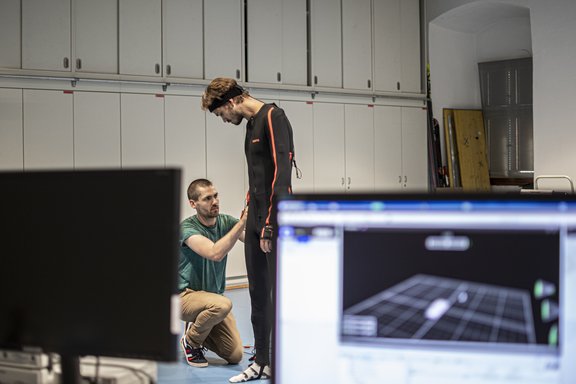
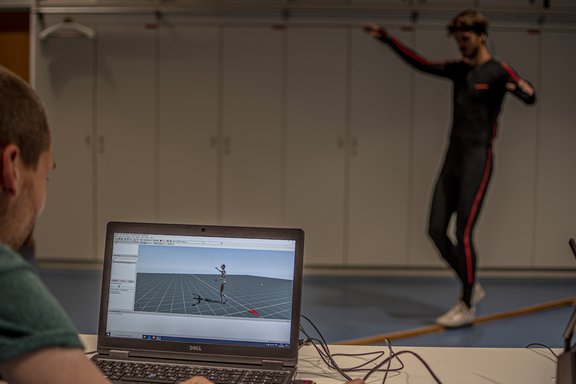
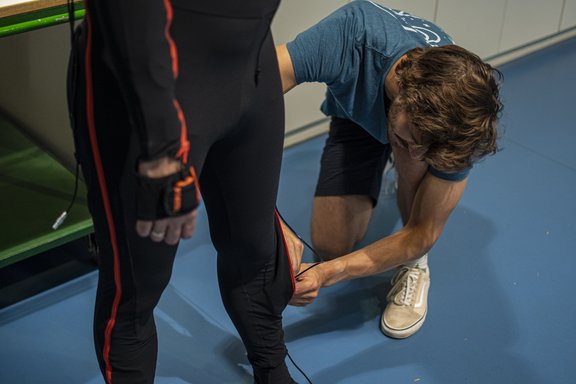
For an overview of current and past research projects, please visit our ResearchGate group page. To connect, collaborate, and discuss with us, get in touch via
The goal of our neuromuscular system is to either produce or restrict movement. Think of kicking a soccer ball (produce movement) or trying to stand as still as possible on one leg (restrict movement). Either way, we can use 3D motion analysis to record and reconstruct the three-dimensional movements of all body segments during a certain task and find out how successfully the neuromuscular system controlled this movement task. An example could be to measure the body sway during a standing balance task or two record the ankle, knee, and hip joint angles while walking on a treadmill. Our research team uses two different technologies to carry out 3D motion analyses: Vicon and Xsens. During these activities, we might also be interested in how this neuromuscular control is maintained. Related to this, we can measure muscle activity using Electromyography (EMG) or the electrical activity in the brain using Electroencephalography (EEG).
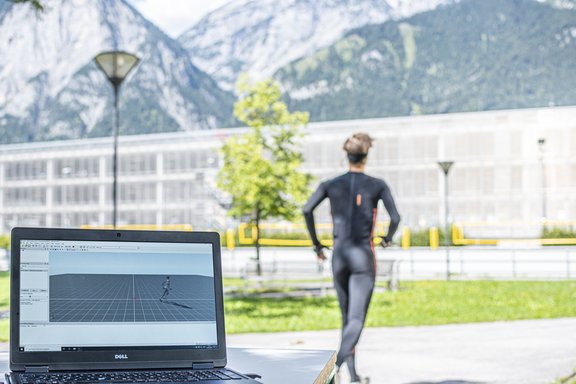
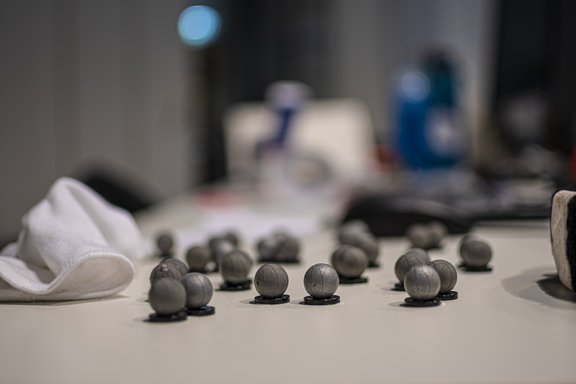
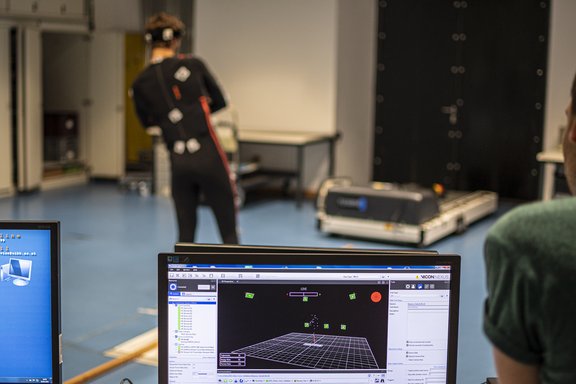
Kinematic Principal Component Analysis (PCA)
One of our more focused research areas is the application of principal component analysis to 3D movement data in order to structure the movement into individual movement components that can be further analyzed. To find out more about the PCA and how to use it, check out the free software developed in our group: The PManalyzer.
Also, check out the video tutorials and explanations related to the application of PCA on movement data.
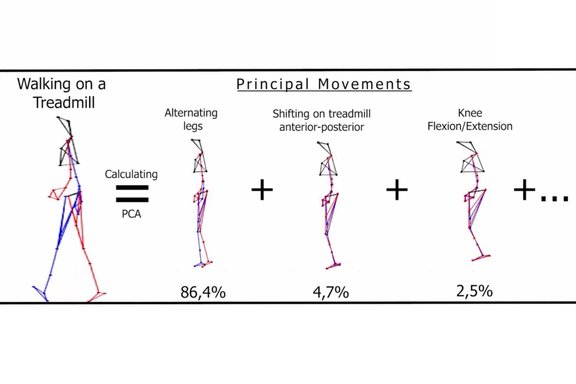
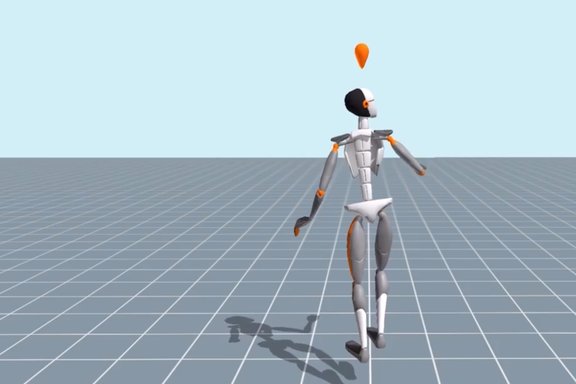
Steven van Andel (PhD), post-doctoral fellow, 2020-2022
Aude-Clémence Doix (PhD), post-doctoral fellow, 2015-2019
Felix Wachholz (PhD), doctoral student, 2017-2020
Alessia Longo (PhD), guest doctoral student, 2016-2018; home university: Radboud University, Nijmegen
Arunee Promsri (PhD), doctoral student, 2016-2020
Thomas Haid (PhD), doctoral student, 2015-2019
Master students
2022: Antonia Santner, Simone Beekhuizen, Noah Buntrock, Dominik Fridrich, Antonia Hackl, Robin Mayr, Robin Pieper, Florian Röhrl, Julia Scharbert
2021: Benjamin Reimeir, Andreas Schmidt, Florian Sterner, Lucas Peer
2020: Daniel Jochum, Daniel Debertin (exchange; home university: Karlsruhe Institute of Technology KIT, Karlsruhe, Germany), Tove Kockum
2019: Federico Tiribello, Johannes Grünbichler, Maximilian Huber, Maximilian Seidl, Maria Weise, Mario Gattinger, Toni Leidl
2018: Valentin Klotzner (exchange; home university: Karlsruhe Institute of Technology KIT, Karlsruhe, Germany)
2017: Julia Hagenauer, Felix Wachholz, Sebastian Färber, Nicolai Szelenczy
2016: Roman Rethwilm, Martin Winding, Julian Kiefer, Tobias Jäger
If you are interested in working with our group as an intern, please contact Prof. Federolf via email.
Former interns
2022: Luisa Haag
2021: Ivan Serafin


